Traveling light while maximizing your enjoyment is a key to a successful trip. This guide dives deep into the art of packing everything essential into a carry-on suitcase, addressing various travel styles and needs. From meticulous planning to practical packing techniques, we’ll equip you with the knowledge and strategies to conquer any packing challenge.
Whether you’re embarking on a bustling business trip, a relaxing weekend getaway, or a thrilling backpacking adventure, this comprehensive guide provides a structured approach to packing efficiently and effectively. We’ll explore essential clothing items, valuable accessories, and crucial documents, all tailored to different travel scenarios. A detailed packing list template will serve as your personalized packing companion.
Clothing Selection
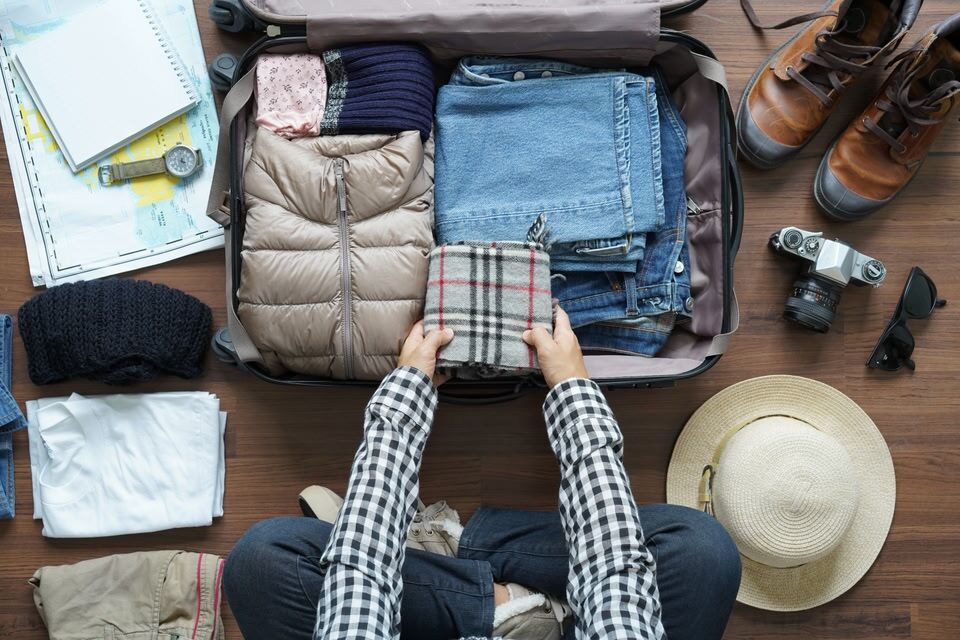
Choosing the right clothing for your trip is crucial for comfort and packing efficiency. A well-curated wardrobe allows you to maximize space while ensuring you’re prepared for various weather conditions. Strategic layering and versatile items are key to a successful carry-on packing strategy.Careful consideration of the weather conditions during your trip is essential for selecting appropriate clothing. Knowing if you’ll encounter warm, cool, or extreme temperatures allows for the most efficient packing strategy.
Consider both the expected highs and lows when selecting clothing items.
Essential Clothing Items for Different Weather Conditions
A versatile wardrobe minimizes the number of items you need to pack. Prioritize items that can be mixed and matched, allowing for multiple outfits without excessive volume. Consider neutral colors like black, gray, navy, and khaki that can be combined in various ways.
- Warm Weather: Light, breathable fabrics such as cotton, linen, or rayon are ideal for warm climates. Pack lightweight t-shirts, tank tops, shorts, and a light, foldable cardigan or jacket for evenings. A quick-drying athletic shirt or a lightweight button-down shirt is a good addition for versatility.
- Cool Weather: Choose fabrics like fleece, wool, or a lightweight down jacket. A versatile long-sleeve shirt, a sweater, and comfortable pants are important for a cooler climate. A light raincoat or waterproof jacket is also beneficial for unpredictable weather.
- Extreme Weather: If you’re traveling to a region with extreme temperatures, prioritize layers to adjust to changing conditions. A waterproof jacket, thermal underwear, and sturdy hiking pants are recommended. Consider a warm hat and gloves for added protection.
Versatile Clothing Items
Mixing and matching clothing items is crucial for maximizing space and minimizing the number of garments you bring. This reduces the overall volume of your carry-on luggage. Select items that can be styled in multiple ways, allowing for diverse outfits with fewer items.
- Neutral Colors: Neutrals like black, gray, and navy are highly versatile. They can be paired with a variety of colors and patterns, maximizing the number of outfits possible from a limited selection.
- Multifunctional Pieces: A versatile jacket, a lightweight cardigan, or a dress that can be dressed up or down are examples of pieces that can be used in multiple outfits.
- Basic Tops and Bottoms: Basic t-shirts, blouses, pants, and skirts are essential. These items can be mixed and matched for diverse outfits.
Layering Clothing for Comfort and Flexibility
Layering clothing allows for adjusting to changing temperatures throughout the day or during your trip. It also provides comfort and ensures you’re prepared for varying weather conditions.
- Base Layers: Start with thermal underwear or lightweight t-shirts to regulate body temperature. These layers are essential for both warmth and moisture-wicking.
- Mid-Layers: A light sweater, cardigan, or fleece jacket is ideal for added warmth or insulation. These layers can be easily added or removed as needed.
- Outer Layers: A waterproof jacket or light rain jacket protects against the elements. This layer is crucial for unexpected rain or cold weather.
Appropriate Shoes for the Trip
Choosing the right shoes is essential for comfort and functionality during your trip. Consider the activities you’ll be doing and the terrain you’ll be walking on.
- Versatile Footwear: A pair of comfortable walking shoes or sneakers is suitable for most activities. A versatile pair of shoes can be worn for multiple occasions and are ideal for maximizing space.
- Specific Activities: If you have specific activities planned, such as hiking, consider bringing specialized shoes for those activities. Consider bringing hiking boots or sandals for specific excursions.
- Comfort and Support: Prioritize comfort and support when selecting shoes. Uncomfortable shoes can lead to discomfort during travel and activities.
Reducing Clothing Bulk and Maximizing Space
Packing strategically can save significant space in your carry-on luggage. Compressing clothing items and using packing cubes are efficient ways to reduce bulk.
- Rolling Clothes: Rolling clothes instead of folding them minimizes wrinkles and saves space. Rolling techniques are particularly effective for reducing the bulk of clothing items.
- Packing Cubes: Use packing cubes to organize and compress clothes. These cubes also help maintain the shape of clothing items and prevent wrinkles. They offer an excellent way to maximize the space in your carry-on suitcase.
- Choose Lightweight Fabrics: Select lightweight fabrics such as linen or nylon to reduce the overall weight of your clothing. Lightweight materials allow for efficient space utilization.
Accessories and Electronics
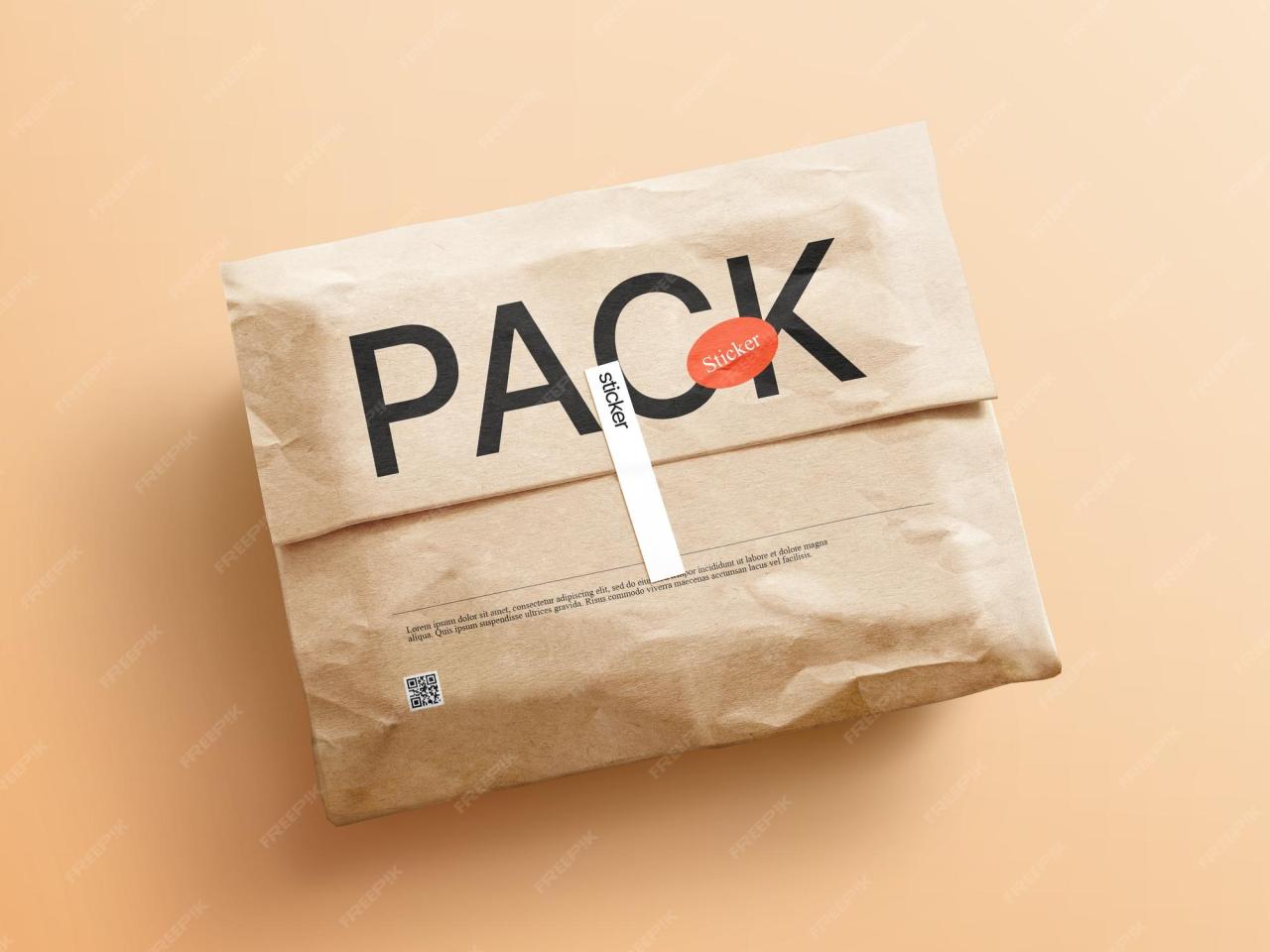
Packing light while ensuring you have all the essentials for your trip requires careful planning. This section details the crucial accessories and electronics to consider, emphasizing strategies for minimizing weight and bulk while maintaining safety and functionality. Careful selection and packing methods are key to a smooth and stress-free travel experience.
Essential Accessories
A well-organized toiletries bag is essential for carrying travel-sized personal care items. This includes shampoo, conditioner, soap, toothpaste, and other necessities. Consider travel-sized containers to reduce bulk and weight. Similarly, packing small, lightweight jewelry pieces and any other personal items will maximize space and minimize weight. This can include sunglasses, wallets, and other small accessories.
Prioritize items that hold personal value and functionality during your trip.
Essential Electronics
A list of essential electronics often includes a smartphone, laptop, tablet, and e-reader. Ensure you have all necessary chargers for each device, as well as any necessary cables and adapters. In particular, adapters may be necessary to accommodate varying international electrical standards. Consider the specific devices you will use and prioritize those that will be most essential to your trip.
Minimizing Weight and Bulk of Electronics
Compressing and packing electronics carefully is key. Use appropriate carrying cases to protect fragile items. Look for lightweight and compact options. If possible, choose devices with smaller form factors or lower weight. Consider the specific requirements of your chosen luggage type.
For example, some carry-on suitcases may have specific compartments for electronics or devices that will protect them during travel.
Packing Electronics Safely and Securely
Securely pack electronics in your carry-on luggage. Place them in padded cases or protective pouches to prevent damage during transport. Keep them close to you, or in a secured area within your carry-on luggage, to minimize the risk of theft. Avoid packing fragile or expensive electronics in checked luggage, as there is a greater risk of damage or loss.
Carry-on Luggage Suitability
Different carry-on luggage types offer varying levels of space and organization. Soft-sided rolling suitcases provide flexibility and are typically more affordable. Hard-sided cases often offer better protection and structural integrity. The specific needs of your trip and the number of items you need to carry should guide your choice. For instance, if you require significant space for electronics, a hard-sided case with compartments might be more beneficial.
Likewise, if space is limited, a soft-sided rolling suitcase might be the better option.
Documents and Valuables
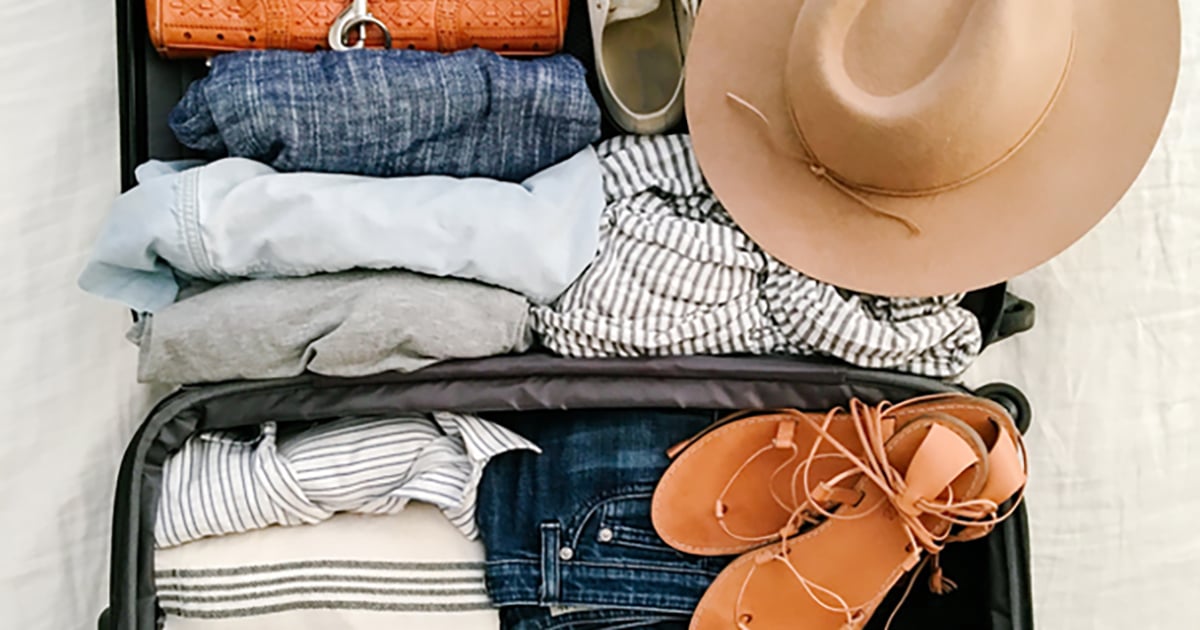
Properly managing your travel documents and valuables is crucial for a smooth and secure trip. This involves careful planning and organization to ensure you have everything you need while minimizing the risk of loss or theft. Effective strategies for packing these items will contribute significantly to a stress-free travel experience.Effective management of documents and valuables is paramount for a secure and enjoyable trip.
This entails a structured approach to packing, ensuring essential documents are readily available while prioritizing security measures against theft. This section Artikels key steps and strategies to accomplish this.
Document Checklist
Careful preparation of a travel document checklist ensures that you have all the necessary items. This comprehensive list should include essential documents such as passports, visas, flight tickets, and any other required travel documents.
- Passport: Verify the validity of your passport, ensuring it’s valid for the duration of your trip and beyond.
- Visa: If necessary, confirm that you possess the correct visa for the countries you’ll be visiting. Check visa requirements in advance.
- Flight Tickets: Keep your flight tickets (both paper and electronic copies) safely organized and accessible.
- Hotel Reservations: If applicable, maintain copies of your hotel reservations for reference.
- Travel Insurance Information: Keep your travel insurance policy information readily available, either digitally or in printed form.
- Emergency Contact Information: Include contact information for emergencies, including local authorities or emergency services in the destination country.
Secure Storage of Documents and Valuables
Prioritizing security is key when handling essential documents and valuables. A secure storage strategy will minimize the risk of theft or loss.
- Internal Pockets: Utilize internal pockets in your carry-on suitcase to secure important documents, such as passports and tickets. Avoid placing them in easily accessible external pockets.
- Document Sleeves: Invest in waterproof document sleeves to protect sensitive documents from moisture or damage. These are especially beneficial for international travel.
- Passport Holder: A dedicated passport holder, either a wallet or a specialized holder, provides a secure compartment for your passport, ensuring it’s easily accessible yet protected.
- Travel Wallet: A designated travel wallet can be used to organize cash, credit cards, and other valuable items. Consider a travel wallet with multiple compartments for organized storage.
Importance of Copies
Having copies of important documents serves as a backup in case of loss or damage to the originals.
- Digital Copies: Create digital copies of your passport, tickets, and other important documents and store them securely on your phone or a cloud storage service. This ensures accessibility even if the originals are lost.
- Printed Copies: Maintain printed copies of essential documents. These are useful for situations where digital access isn’t available. Keep them separate from the originals for added security.
- Email Copies: If possible, send yourself email copies of crucial documents, ensuring that you have a digital backup in multiple locations. This can be helpful if your device is lost or damaged.
Organizing Documents in Carry-on
Careful organization within your carry-on suitcase ensures easy access to important documents while maintaining security.
- Dedicated Compartments: Use the compartments within your carry-on suitcase to organize documents. Place documents in compartments that are less accessible from the outside.
- Zip-Lock Bags: Use zip-lock bags to separate and organize different document categories, keeping them compact and protected.
- Securing Valuables: Use designated pockets or compartments to keep valuables separate from documents. Secure valuables in compartments designed to minimize risk of theft.
Protecting Documents and Valuables
Proactive measures are essential for safeguarding documents and valuables during travel.
- Secure Suitcase: Ensure your carry-on suitcase is securely locked or fastened. Choose a suitcase that has sturdy locks for extra protection.
- Hidden Compartments: Use hidden compartments within your suitcase for storing valuables. These compartments are less likely to be noticed during a potential theft.
- Avoid Visible Items: Avoid placing conspicuously valuable items in obvious locations. Pack items like jewelry and electronics in less visible compartments or pouches.
Packing Techniques
Maximizing space in a carry-on suitcase requires careful planning and execution. Efficient packing techniques are crucial for avoiding checked baggage fees and ensuring that your belongings fit comfortably within the allocated space. This section details various methods to optimize your packing process and guarantee a smooth travel experience.Proper packing techniques are essential for maximizing space and minimizing stress during travel.
Rolling clothes, using packing cubes, and strategically arranging items are key elements in successful carry-on packing. Understanding these techniques can make the difference between a cramped and frustrating trip and a comfortable and organized one.
Rolling Clothes
Rolling clothes instead of folding them is a highly effective method for saving space and preventing wrinkles. This technique allows for tighter packing, ensuring that more items can fit into the suitcase. A significant advantage is the reduction of creases in garments, which is particularly beneficial for wrinkle-sensitive fabrics.
- To roll clothing, lay the garment flat. Starting from one end, tightly roll the garment towards the other end. Ensure that the fabric is tightly wound to create a compact roll.
- Roll similar items together (e.g., shirts, pants) to maintain a streamlined and organized packing system.
- Place the rolled garments vertically within the suitcase for maximum space utilization.
Packing Cubes or Organizers
Packing cubes or other organizers provide an excellent means for compartmentalizing clothing and accessories. These organizers enable efficient space management, helping to keep items separate and reducing the risk of mixing clothing.
- Packing cubes come in various sizes and materials, allowing for personalized organization.
- These cubes can be used to group similar items (e.g., shirts, pants, socks) and maintain a clean and organized packing structure.
- Placing shoes, toiletries, or other small items within packing cubes can further enhance packing efficiency and prevent damage.
Packing Fragile Items
Fragile items, such as electronics or glassware, require special handling during packing to avoid breakage. Using appropriate packing materials is crucial for their safe transport.
- Wrap fragile items in soft, protective materials like bubble wrap or cloth.
- Place these items in designated sections of the suitcase, such as the bottom or on top of other clothing to provide additional protection from external shocks.
- Secure the fragile items using sturdy packing materials, ensuring they remain stable during transport.
Step-by-Step Packing Guide
This guide provides a systematic approach to packing a carry-on suitcase, maximizing space and minimizing stress.
- Lay out your clothes: Plan your outfit combinations and determine the necessary items for your trip. Avoid overpacking by sticking to the items you will use.
- Roll your clothes: Roll your garments tightly to save space and prevent wrinkles.
- Use packing cubes or organizers: Compartmentalize your belongings by using packing cubes to organize clothing and accessories. This will make it easier to find items and keep your suitcase neat and tidy.
- Pack fragile items: Wrap fragile items in bubble wrap or soft cloth and place them in a secure area of the suitcase. Use sturdy materials to secure them further.
- Pack heaviest items first: Place heavier items at the bottom of the suitcase to maintain stability and prevent shifting during travel.
- Secure your suitcase: Use straps, belts, or other securing devices to keep the contents firmly in place.
Troubleshooting Common Packing Issues
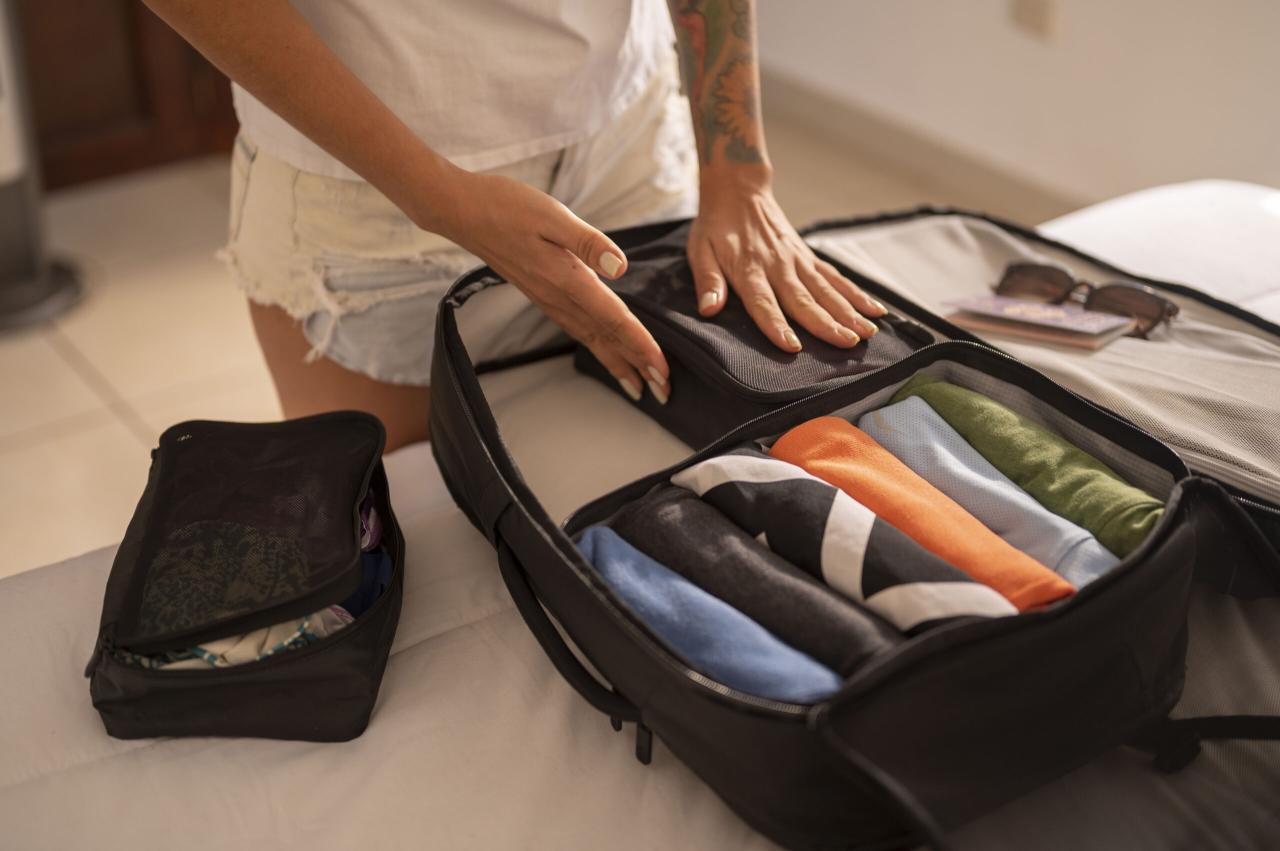
Packing for a trip can be a rewarding experience, but it’s important to be prepared for potential challenges. Understanding common pitfalls and having strategies in place to address them can greatly enhance your travel experience. This section will Artikel crucial aspects of handling potential packing issues, from overpacking to unexpected weather changes, ensuring a smoother and more enjoyable journey.
Common Packing Mistakes and How to Avoid Them
Frequent packing mistakes often stem from a lack of planning and consideration. Poor planning can lead to unnecessary items being packed, resulting in overpacking, or important essentials being left behind. To avoid these errors, create a detailed packing list well in advance of your trip. This list should be tailored to the specific trip, considering the destination’s climate, activities, and duration.
Dealing with Overpacking or Underpacking
Overpacking leads to a cumbersome and less comfortable travel experience. Underpacking, on the other hand, can cause significant stress and inconvenience. To effectively manage both situations, use the packing list as a guide. Ensure that every item on the list is essential and serves a specific purpose. Before packing, visually review the list to confirm you have all necessary items, and consider the practicality of each item.
Prioritize versatile clothing options that can be mixed and matched, thereby minimizing the total number of garments needed.
Addressing Unexpected Weather Changes
Unpredictable weather conditions can significantly impact travel plans. It’s crucial to be prepared for various weather scenarios. Packing layers of clothing is essential. A light, waterproof jacket, a warm sweater, and comfortable walking shoes are crucial. If you anticipate significant temperature fluctuations, ensure you pack clothing suitable for both warm and cool weather.
Consider the possibility of rain or sudden changes in temperature and have suitable layers.
Solutions for Lost or Damaged Luggage
Unfortunately, luggage loss or damage is a possibility during travel. It’s essential to have a backup plan in place. Always keep copies of important documents, such as your passport and flight information, separate from your luggage. Document your luggage details (e.g., airline, flight number, luggage tag information) and any personal items within your luggage. Contact your airline immediately if your luggage is lost or damaged to initiate the claims process.
Ensure you have travel insurance to cover potential losses.
Strategies for Staying Organized During and After a Trip
Maintaining organization during and after a trip is crucial for a smooth transition. Labeling your luggage clearly and using packing cubes or organizers can significantly aid in maintaining order. Take photos of the contents of your luggage before you leave. This visual record can help with claims if your luggage is lost or damaged. Keeping a journal or log of your expenses, activities, and important details during your trip will prove beneficial.
Upon your return, organize and unpack your luggage efficiently, sorting items into their appropriate locations to prevent clutter.
Visual Examples
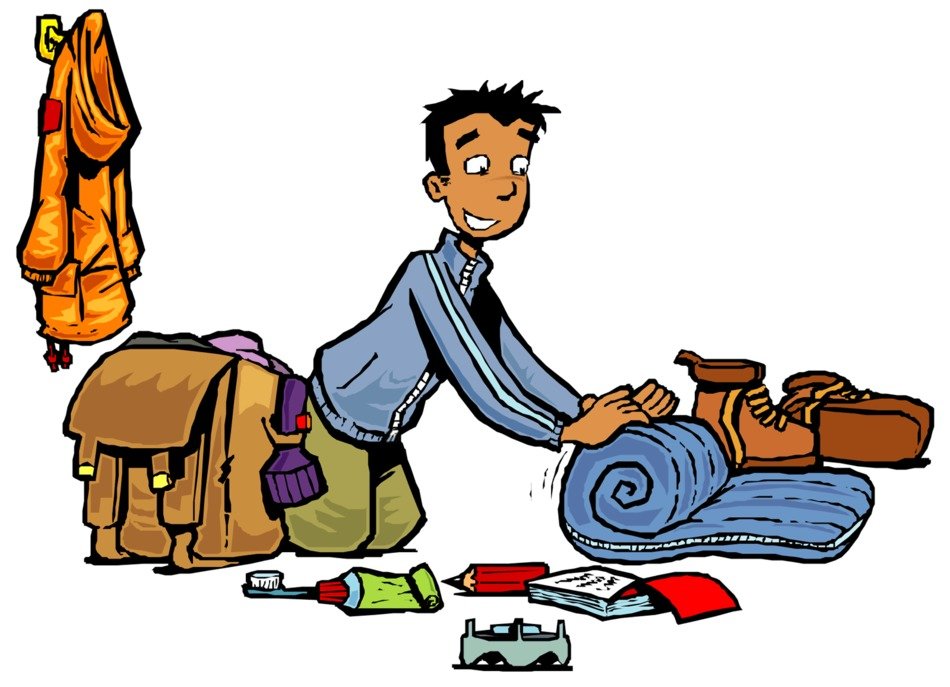
Visual aids greatly enhance the understanding of packing techniques. This section will provide detailed descriptions of various packing methods, showcasing how to effectively utilize space and protect your belongings. Examples will illustrate how to arrange items for different trip types, emphasizing the importance of careful planning and organization.Visual representation of packing strategies is crucial. The following examples illustrate efficient packing techniques, ensuring a streamlined travel experience.
Specific illustrations showcase packing delicate items such as electronics and jewelry, while other images demonstrate how to use various packing materials effectively.
Rolling Clothes
Rolling clothes is an effective method for maximizing space in a suitcase. This technique reduces wrinkles and allows for a more organized layout. Imagine a t-shirt; instead of folding it flat, roll it tightly from one end to the other. Repeat this process for all your clothing items. This method allows for compact packing, saving precious space in your carry-on.
Using Packing Cubes
Packing cubes offer a highly effective way to organize and compartmentalize your belongings. Each cube serves as a dedicated space for clothing items, accessories, or other essentials. Different-sized cubes allow you to efficiently sort items, from socks and underwear to shirts and pants. The use of packing cubes improves organization and makes it easier to locate specific items.
Organizing a Toiletries Bag
A well-organized toiletries bag is crucial for a smooth trip. Consider a clear, see-through bag to easily locate your items. Use small, clear containers or ziplock bags to compartmentalize liquids, creams, and other toiletries. This organized approach keeps everything in place and minimizes the risk of spills or leaks during transit. Labeling containers further enhances organization and ensures easy access.
Carry-on Suitcase Arrangement for Different Trip Types
The arrangement of items within a carry-on suitcase should be tailored to the specific trip type. For a weekend getaway, focus on essential clothing items and toiletries. For a longer trip, plan for multiple outfits and more extensive accessories. Consider packing heavier items like shoes at the bottom of the suitcase for stability.
Packing Materials
Various packing materials can enhance the protection and organization of your items. Ziplock bags are ideal for liquids and smaller items to prevent spills and maintain order. Packing paper or tissue paper can cushion fragile items and prevent them from moving around. These materials ensure the safety of your belongings and contribute to a smoother journey.
Packing Delicate Items
Delicate items such as electronics or jewelry require special care during packing. Use packing paper or bubble wrap to cushion and protect these items from damage. Place them in separate compartments within the suitcase, preferably with additional padding to prevent them from shifting. This careful approach ensures that your precious belongings arrive at their destination in perfect condition.
Example Suitcase Arrangement: Business Trip
For a business trip, prioritize professional attire and essential documents. Arrange your clothing items in a manner that allows for easy access to formal wear. Organize important documents in a separate, dedicated section, ensuring they are readily available. Electronic devices and accessories can be packed in dedicated compartments within the suitcase, away from clothing items.
Final Thoughts
In conclusion, mastering the art of carry-on packing is achievable with careful planning and strategic execution. By understanding your trip’s specifics, selecting versatile clothing, and employing space-saving techniques, you can travel comfortably and efficiently. The provided packing list template and tips for troubleshooting common issues will empower you to pack smarter, not harder, for any adventure.